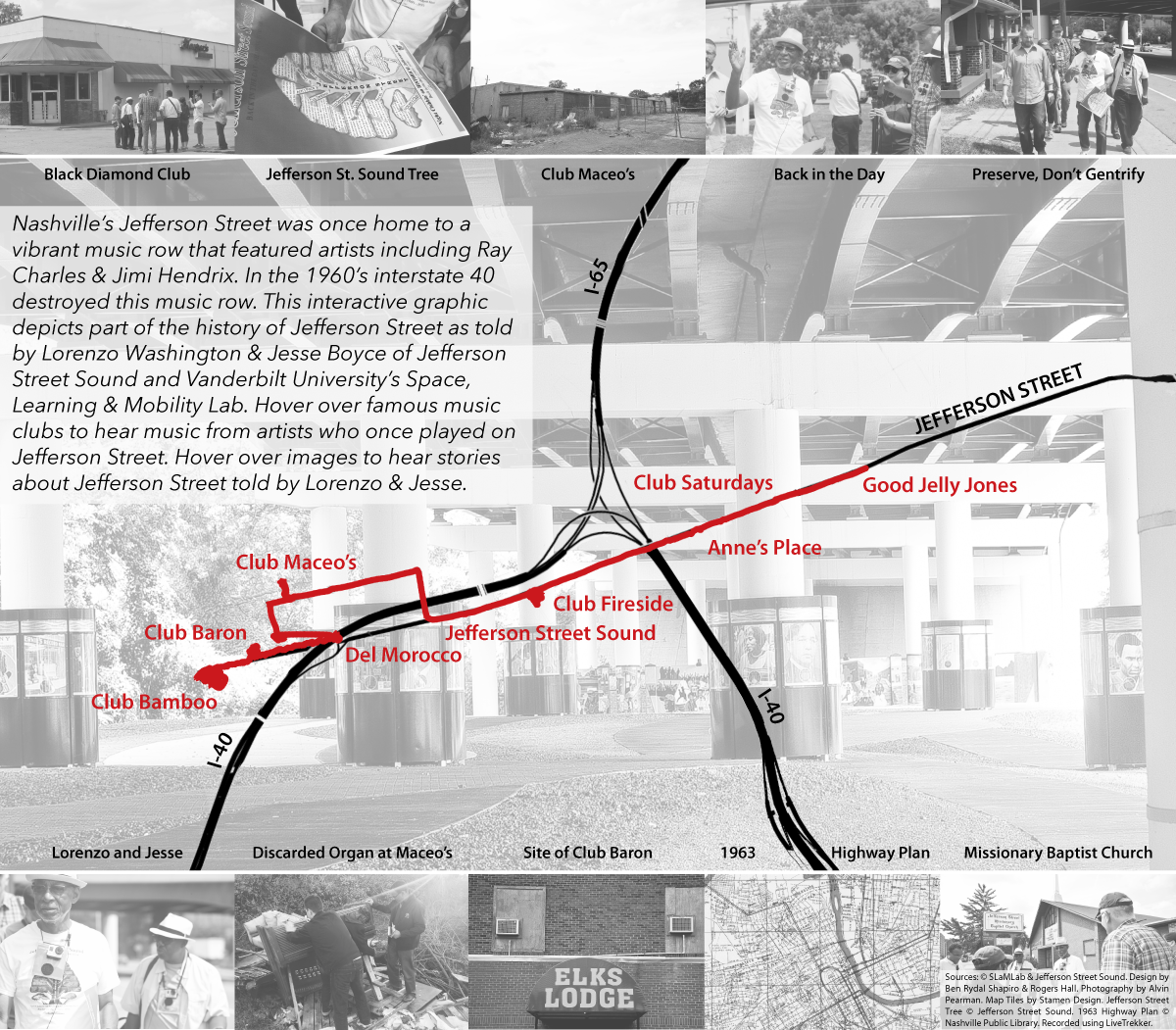The Space, Learning & Mobility Laboratory
at Vanderbilt University
Welcome to the SLaMLab at Vanderbilt University. This site is dedicated to a collection of materials used and built during research with Vanderbilt students, local schools, and a grassroots museum community partner dedicated to preserving local music history in a historically Black community in North Nashville.
Our hope is that this collection of digital spatial stories (DSSLs) and the activities generated to facilitate learning with DSSLs can continue to be used for learning in the years to come.
——————————————–
The SLaMLab engages faculty and graduate students in design studies of how physical and virtual spaces can better support learning. Members collaborate on research projects, design experimental teaching, and write about relations between space, mobility, and learning.
An example of our work: “Back in the Day” on Nashville’s Historic Jefferson Street with Lorenzo Washington and Jesse Boyce of Jefferson Street Sound (Look under “Storylines / Jesse & Lorenzo”) menu item above.

PI’s: Professors Rogers Hall and Andy Hostetler at Vanderbilt’s Peabody School of Education, Professor David A. Owens at Vanderbilt’s Graduate School of Management, and post-doctoral researcher Ben Rydal Shapiro at Georgia Tech University and the SLaM Lab.
Nashville’s Historic Jefferson Street was once home to a vibrant economically successfully and socially cohesive black community. Beyond the three HBCU universities, an elementary and high school, innumerable business and numerous civic organizations, it also starred as Nashville’s original music row.
The neighborhood was home to 100’s of businesses including nightclubs and music venus from the 1930’s through the 1960’s. Over those years the neighborhood was visited by innumerable famous artists including Duke Ellington, Ray Charles, and Etta James among others, and it also provided venues for Nashvillians such as Jimi Hendrix, Marion James, Gene Allison, Jessie Boyce and more.
In the late 1960’s the routing of interstate I40 destroyed this music row, and many residents argue, the neighborhood and community. This set of interactives maps is our small attempt to document that history and give voice to people who once lived, worked, and played there.
Use the navigation menu at the top of the page to see pointers to some of the music and civil rights history, and visit the Storylines item to see some personal stories from past and present residents of the neighborhood.